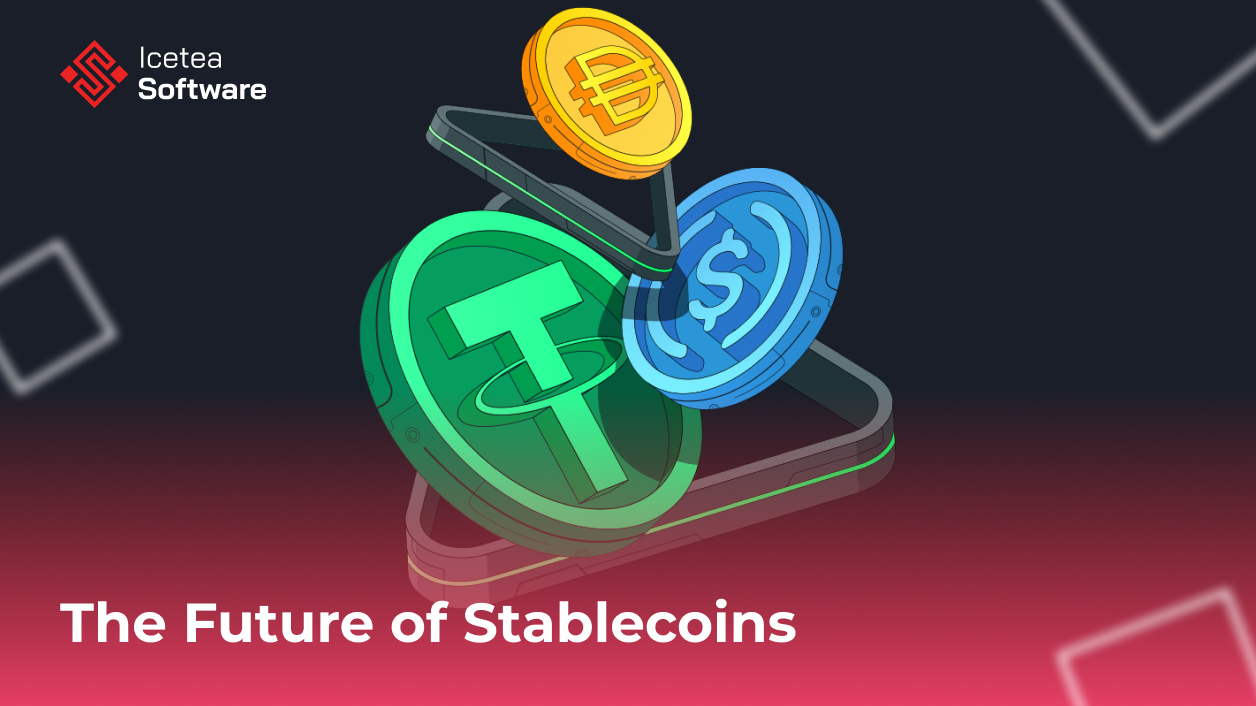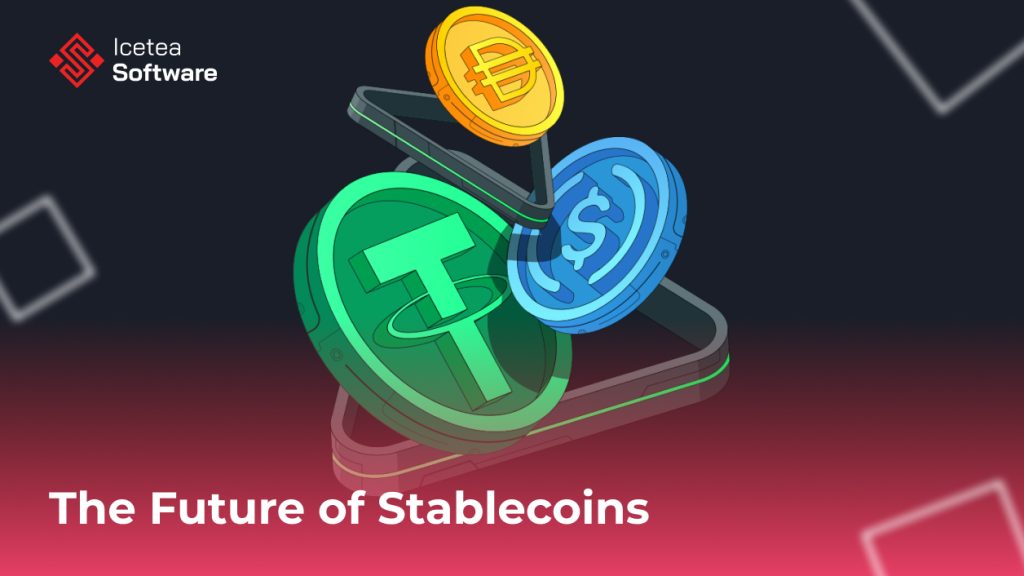Stablecoins: Let’s See The World Future Await


Stablecoins have emerged as a cornerstone of the cryptocurrency ecosystem, offering the benefits of digital currencies while minimizing their notorious volatility. Pegged to assets like fiat currencies or commodities, stablecoins provide a reliable store of value, making them essential for trading, payments, and decentralized finance (DeFi) applications. As the world becomes more digitized, these coins are poised to play an increasingly pivotal role in reshaping global finance.
This blog explores the current state, the technological and regulatory developments shaping their evolution, their impact on traditional finance, and the challenges they face as they move toward widespread adoption.
The Rise of Stablecoins
The concept was born out of the need for a cryptocurrency that could combine the advantages of blockchain technology with the price stability of traditional currencies. Unlike Bitcoin or Ethereum, whose values can fluctuate dramatically, these coins maintain a relatively steady value by being pegged to underlying assets.
Today, they have grown into a multi-billion-dollar market. As of late 2024, the global market capitalization has surpassed $190 billion. Leading players like Tether (USDT), USD Coin (USDC), and Binance USD (BUSD) dominate the space, while emerging competitors and algorithmic stablecoins add diversity and innovation.
Types of Stablecoins
Stablecoins are categorized based on the mechanism they use to maintain price stability:
- Fiat-Collateralized Stablecoins They are backed by fiat reserves, such as the U.S. dollar or euro, held in a bank account. For example, Tether (USDT) and USD Coin (USDC) are among the most popular fiat-backed stablecoins. Their value remains stable as each coin is backed by an equivalent amount of fiat currency.
- Crypto-Collateralized Stablecoins They are backed by other cryptocurrencies, which are often over-collateralized to account for volatility. Dai (DAI), managed by the MakerDAO protocol, is a prominent example. Users deposit cryptocurrencies like Ethereum into a smart contract to mint DAI, ensuring price stability through decentralized governance.
- Algorithmic Stablecoins: Algorithmic use smart contracts to control supply and demand, maintaining price stability without collateral. TerraUSD (UST) was a notable example before its collapse highlighted the risks inherent in this approach. Despite setbacks, algorithmic stablecoins remain a focus of innovation.
- Commodity-Collateralized Stablecoins They are backed by tangible assets such as gold or other commodities. For instance, Paxos Gold (PAXG) allows users to own a digital asset directly linked to physical gold, blending the stability of commodities with blockchain technology.
Current Use Cases
Stablecoins have proven indispensable across various applications:
- Payments and Remittances These stable coins facilitate low-cost, instant cross-border payments, bypassing the inefficiencies of traditional banking systems. Platforms like PayPal and Visa are integrating stablecoin-based solutions to streamline global transactions.
- Trading and Hedging Traders use them as a hedge against the volatility of cryptocurrencies. They also serve as a bridge currency, enabling seamless trading across different exchanges.
- Decentralized Finance (DeFi) Stablecoins are a backbone of DeFi protocols, providing liquidity for lending, borrowing, and yield farming. Their stability ensures that users can engage with complex financial products without worrying about extreme value fluctuations.
- Store of Value In regions with unstable economies or hyperinflation, stablecoins offer a safe and accessible store of value. They provide financial inclusion for unbanked populations by offering access to stable currencies through mobile devices.
Technological Innovations Shaping the Future
As blockchain technology evolves, so do the capabilities of stable coins. Key innovations include:
- Interoperability Protocols Cross-chain interoperability allows these stable coins to operate seamlessly across multiple blockchain networks. This increases their utility in DeFi and enhances liquidity across platforms.
- Smart Contracts and Automation Advanced smart contracts enable algorithmic stable coins to self-regulate supply and demand, creating opportunities for decentralized governance and automation in financial systems.
- Scalability Solutions Layer 2 solutions and other scaling technologies are reducing transaction costs and increasing speed, making stable coins more practical for everyday use.
- Enhanced Privacy Features Emerging privacy-preserving technologies, such as zero-knowledge proofs, are being integrated into stable coin systems to enhance user confidentiality while maintaining regulatory compliance.
Institutional Adoption
Stablecoins are increasingly gaining traction among traditional financial institutions:
- Payment Giants Companies like PayPal and Visa are embracing these coins to facilitate faster and cheaper cross-border payments. PayPal’s launch of its own stablecoin, PYUSD, marks a significant step toward mainstream adoption.
- Bank Integrations Major banks are exploring stablecoins as a means of improving settlement systems and offering customers more efficient payment options.
- Central Bank Digital Currencies (CBDCs) While not technically stablecoins, CBDCs are inspired by the same principles. As central banks worldwide develop digital currencies, private stablecoins could coexist, complementing government-issued alternatives.
Regulatory Landscape
Regulation is critical for the future of stablecoins. Governments and regulatory bodies are working to create frameworks that balance innovation with consumer protection:
- U.S. Initiatives In the United States, the Securities and Exchange Commission (SEC) and the Commodity Futures Trading Commission (CFTC) are collaborating to regulate stablecoins. Proposed legislation seeks to establish clear guidelines for issuance, reserve management, and anti-money laundering compliance.
- European Union’s MiCA Regulation The Markets in Crypto-Assets (MiCA) framework aims to standardize crypto regulations across EU member states, providing a transparent and secure environment for stablecoin operations.
- Global Coordination Organizations like the Financial Stability Board (FSB) are advocating for international cooperation to ensure consistent and effective regulation of these coins across jurisdictions.
Challenges Facing Stablecoins
Despite their potential, these coins face several obstacles:
- Regulatory Uncertainty Inconsistent rules across different regions create challenges for global adoption. Harmonizing these regulations is crucial to stablecoin’s success.
- Technological Vulnerabilities Smart contract bugs, cyberattacks, and systemic risks in algorithmic stablecoins highlight the need for robust security measures.
- Competition from CBDCs The rise of CBDCs may overshadow private stablecoins, particularly in countries where governments exert strong control over financial systems.
- Market Concentration Dominance by a few stablecoins, such as USDT and USDC, raises concerns about market monopolization and systemic risk.
The Road Ahead
The future is intertwined with technological innovation, regulatory clarity, and global collaboration. Key trends to watch include:
- Integration with DeFi and Web3 These coins will continue to power DeFi protocols, expanding their role in Web3 applications such as decentralized identity and tokenized assets.
- Emergence of Hybrid Models: Combining the strengths of different stablecoin models could lead to hybrid solutions that offer improved stability, security, and scalability.
- Focus on Sustainability Efforts to reduce the environmental impact of blockchain networks will drive the adoption of energy-efficient technologies.
- Financial Inclusion Stablecoins have the potential to democratize access to financial services, particularly in developing regions where traditional banking infrastructure is lacking.
Final Thoughts
Stablecoins are set to play an increasingly significant role in the global financial ecosystem. By bridging the gap between traditional finance and blockchain technology, they offer stability, efficiency, and inclusivity. However, realizing their full potential requires addressing challenges such as regulatory uncertainty, technological vulnerabilities, and competition from CBDCs.
As stablecoins evolve, their adoption by institutions and individuals alike will drive innovation and reshape the future of money. With advancements in technology and growing support from the financial sector, stablecoins are poised to revolutionize how value is stored and transferred, paving the way for a more connected and equitable financial system.
𝐼𝑐𝑒𝑡𝑒𝑎 𝑆𝑜𝑓𝑡𝑤𝑎𝑟𝑒 𝑖𝑠 𝑎 𝑙𝑒𝑎𝑑𝑖𝑛𝑔 𝑊𝑒𝑏3 𝑑𝑒𝑣𝑒𝑙𝑜𝑝𝑚𝑒𝑛𝑡 𝑐𝑜𝑚𝑝𝑎𝑛𝑦 𝑏𝑎𝑠𝑒𝑑 𝑖𝑛 𝑉𝑖𝑒𝑡𝑛𝑎𝑚, 𝑘𝑛𝑜𝑤𝑛 𝑓𝑜𝑟 𝑝𝑖𝑜𝑛𝑒𝑒𝑟𝑖𝑛𝑔 𝑏𝑙𝑜𝑐𝑘𝑐ℎ𝑎𝑖𝑛 𝑠𝑜𝑙𝑢𝑡𝑖𝑜𝑛𝑠 𝑎𝑛𝑑 𝑑𝑒𝑐𝑒𝑛𝑡𝑟𝑎𝑙𝑖𝑧𝑒𝑑 𝑎𝑝𝑝𝑙𝑖𝑐𝑎𝑡𝑖𝑜𝑛𝑠 (𝑑𝐴𝑝𝑝𝑠), 𝑑𝑟𝑖𝑣𝑖𝑛𝑔 𝑖𝑛𝑛𝑜𝑣𝑎𝑡𝑖𝑜𝑛 𝑖𝑛 𝑑𝑒𝑐𝑒𝑛𝑡𝑟𝑎𝑙𝑖𝑧𝑒𝑑 𝑓𝑖𝑛𝑎𝑛𝑐𝑒, 𝑁𝐹𝑇𝑠, 𝑎𝑛𝑑 𝑏𝑒𝑦𝑜𝑛𝑑.
————————————
𝐈𝐜𝐞𝐭𝐞𝐚 𝐒𝐨𝐟𝐭𝐰𝐚𝐫𝐞 – 𝐂𝐮𝐭𝐭𝐢𝐧𝐠 𝐄𝐝𝐠𝐞 𝐓𝐞𝐜𝐡𝐧𝐨𝐥𝐨𝐠𝐢𝐞𝐬
𝐖𝐞𝐛𝐬𝐢𝐭𝐞: iceteasoftware.com
𝐋𝐢𝐧𝐤𝐞𝐝𝐢𝐧: https://www.linkedin.com/company/iceteasoftware/
𝐅𝐚𝐜𝐞𝐛𝐨𝐨𝐤: https://www.facebook.com/IceteaSoftware/
𝐓𝐰𝐢𝐭𝐭𝐞𝐫: https://x.com/Icetea_software







